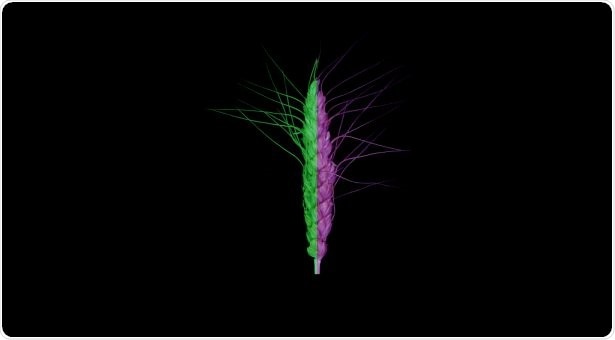Reviewed by Danielle Ellis, B.Sc.Dec 9 2021
Polyploidy is a key route for the creation of new species in plants and a significant means of enhancing agronomic traits in crops.

Image Credit: John Innes Centre.
In polyploids, the impact of subgenomes is not equal—this means that the gene expression of one subgenome is supreme over the other, resulting in a subgenome expression asymmetry.
In the mechanism of gene expression—DNA is transcribed into RNA, which is later utilized to produce protein by a mechanism known as translation. To date, it was not clear about the presence of a subgenome asymmetry at the translational level in polyploid plants.
Scientists from John Innes Centre and associates from China recently identified the existence of subgenome asymmetry at the translational level in tetraploid wheat.
The researchers identified that RNA molecular structure adds to this translational asymmetry between the parental subgenomes. This novel observation would aid wheat breeders to comprehend how traits are inherited.
Because of hybridization and whole-genome duplication that occurred over 400,000 years ago, wheat species contain either two or three copies of every gene, called homologous pairs.
By merging mastery in RNA biology from the Ding group with the expertise of wheat genomics from the Uauy group at the John Innes Centre and the Zhang group from Northeast Normal University in China enabled the researchers to analyze the amount of protein made from homeologous pairs from various subgenomes.
The researchers employed the SHAPE method created by the Ding laboratory to obtain the snapshot of RNA structure. This facilitated the researchers to investigate the relationship between RNA structure and translation. They identified that the single strandedness of the RNA is linked to increased translation efficacy, producing more proteins on these RNAs.
Sequence variations between the homeologs called single nucleotide variations (SNVs) and present, and the researchers intended to investigate if these SNVs might cause variations in the RNA structure of homologous pairs.
The researchers discovered that SNVs are responsible for huge variations in RNA structure—known as “riboSNitches”. The SNVs that induce RNA structure change is more subtle than other SNVs.
The current study indicates that humans for around the 10,000 years of domesticating wheat might have subconsciously selected not only through DNA sequence but also through the structure of RNA, a fact which was not acknowledged before.
Earlier plant breeding utilized predictions depending only on DNA sequence, however, this study indicates that utilizing the understanding of RNA can offer more precise predictions of how traits are transmitted.
Source:
Journal reference:
Yang, X., et al. (2021) Wheat in vivo RNA structure landscape reveals a prevalent role of RNA structure in modulating translational subgenome expression asymmetry. Genome Biology. doi.org/10.1186/s13059-021-02549-y.